
BY EMB MFG INC.
PRINTED IN CANADA
Rev: 200215 PART NUMBER: Z97087
EMB Manufacturing Inc.
4144 Boomer Line · St. Clements, On · N0B 2M0 · Canada
Ph: (519) 699-9283 · Fax: (519) 699-4146
www.embmfg.com
Wood Processor
MODEL WP235 & WP265
OPERATOR'S MANUAL
WP265
Before putting the Wood Processor into service:
Do not attempt to start or operate the Wood Processor without
recieving full safety training and instruction in its features, opera-
tion and maintenance. See page 4 for Pre-Delivery Procedure.
Keep this manual with the
Wood Processor at all times
WP235

2
TABLE OF CONTENTS
WARRANTY .................................................................... 3
DELIVERY INSPECTION REPORT ................................ 4
SERIAL NUMBER LOCATION .......................................5
LABEL INFORMATION ..................................................5
1 INTRODUCTION ................................................6
2 SAFETY .............................................................7
2.1 GENERAL SAFETY ........................................8
2.2 EQUIPMENT SAFETY GUIDELINES .............9
2.3 SAFETY SIGNS ..............................................9
2.4 SAFETY TRAINING ......................................10
2.5 PREPARATION ............................................. 10
2.6 MAINTENANCE SAFETY .............................11
2.7 HYDRAULIC SAFETY ..................................11
2.8 TRANSPORT SAFETY ................................. 11
2.9 OPERATING SAFETY ..................................12
2.10 STORAGE SAFETY......................................12
2.11 SIGN-OFF FORM .........................................13
3 SAFETY SIGNS ...............................................14
3.1 HOW TO INSTALL SAFETY SIGNS: ............14
3.2 SAFETY SIGN EXPLANATIONS: .................14
3 SAFETY SIGN LOCATIONS ..........................15
4 OPERATION ....................................................16
4.1 TO THE NEW OPERATOR OR OWNER .....17
4.1.1 IMPORTANT ................................................17
4.2 MACHINE COMPONENTS ...........................18
4.3 MACHINE BREAK-IN ...................................19
4.4 PRE-OPERATION CHECKLIST ...................19
4.5 CONTROLS ..................................................20
4.5.1. HYDRAULIC WINCH CONTROL..................20
4.5.2. WINCH GEAR LEVER: ................................. 20
4.5.3. HYDRAULIC CONTROLS &
AUTO RETRACT ..........................................21
4.5.4. SPLITTING WEDGE HEIGHT LEVER: ........22
4.5.5. ADJUSTABLE LOG LENGTH GUIDE: .........22
4.5.6. SPLITTER CHUTE HEIGHT ADJUSTER: ....23
4.6 ATTACHING/UNHOOKING...........................24
4.6.1 MOUNTING: .................................................24
4.6.2. TRACTOR HYDRAULICS ..........................25
4.6.3. POWER PACK HYDRAULICS .................... 26
4.7 MACHINE SET-UP .....................................27
4.8 FIELD OPERATION ....................................30
4.8.1. PREPARE ...................................................30
4.8.2. STARTING: .................................................31
4.8.3. STOPPING: ................................................31
4.8.4. EMERGENCY STOPPING: ........................31
4.8.5. PROCESSING OPERATION: .....................32
4.8.6. PULL ANGLE: .............................................34
4.8.7. WOOD DISCHARGE: .................................34
4.8.8. LOG CHAIN OR STRAP: ............................34
4.8.9. CUTTING: ...................................................35
4.8.10. SPLITTING: ................................................35
4.9 TRANSPORTING .......................................36
4.10 STORAGE ..................................................37
4.10.1 PLACING IN STORAGE .............................37
4.10.2 REMOVING FROM STORAGE ..................37
5 SERVICE AND MAINTENANCE ...................38
5.1 SERVICE ....................................................38
5.1.1 FLUIDS AND LUBRICANTS .......................38
5.1.3 SERVICE ILLUSTRATION ..........................39
5.1.4 SERVICE RECORD CHART ......................40
5.1.5. HYDRAULIC SYSTEM OIL
FILTER & OIL CHANGE .............................41
6 TROUBLE SHOOTING ..................................42
7 SPECIFICATIONS .........................................43
7.1 MECHANICAL.............................................43
7.2 BOLT TORQUE ...........................................44
7.3 HYDRAULIC FITTING TORQUE ................45
8 ACCESSORIES .............................................46
#2089A570 NYLON CHAINSAW HOLSTER .........46
#2089W571 6-WAY WEDGE ..................................46
#2089A600 PTO HYDRAULIC POWER PACK ......46
#299001 1.2 M (48") LOG PEAVEY ........................46
#P200 PIVOTING CHAINSAW HOLDER ...............46
INDEX..........................................................................47

3
WARRANTY
WARRANTY
Effective on products retailed on or after January 1, 2015.
Register your product online at www.wallensteinequipment.com
within 30 days of purchase to activate warranty.
This product is warranted to be free of defects in materials and workmanship
under normal use and service, for a period of
from the date of purchase, when operated and maintained in accordance with the Operating and Maintenance Instructions
supplied with this unit. Warranty is limited to the repair of the product and/or replacement of parts.
This warranty does not cover the following items:
1) Machines or parts lost or damaged during shipment,
2) Normal maintenance or adjustments after initial pre-service and set up is completed
3) Normal replacement of service items.
4) Accessory items / parts not supplied by EMB MFG INC.
5) Damages resulting from:
•misuse, negligence, accident, theft or re
•use of improper or insufcient fuel, uids or lubricants
• use of parts or after market accessories other than genuine EMB MFG INC. parts
•modications, alteration, tampering or improper repair performed by parties other than an authorized dealer
•any device or accessories installed by parties other than an authorized EMB dealer or distributor
Engines are covered by the manufacturer of the engine and covered by the warranty period specied by that manufacturer.
Engine warranty must be registered at the engine manufactures website. For service contact your local engine dealer.
Under no circumstances will the manufacturer be liable for any consequential damage or expense of any kind, including loss
of prots. The manufacturer is under no circumstances liable for tow vehicle of any kind. The manufacturer is not liable for
the maintenance of the product.
This warranty is extended only to the original purchaser and is not transferable. Warranty is void if repairs are attempted by
anyone other than a Wallenstein Authorized Service Centre.
If a difculty develops with the product, contact the local dealer from which you purchased the unit. Only Wallenstein author-
ized dealers are authorized to make repairs to the product or affect the replacement of defective parts, which will be done at
no charge within a reasonable time after the receipt of the product. Unit or parts shall be returned at the customer’s expense
to the Authorized Service Centre. Damage in transit is not covered by warranty. Include the original purchase receipt with
any claim (keep a copy of the receipt for your les).
The distributor’s liability under warranty is limited to the repair of the product and/or replacement of parts and is given to the
purchaser in lieu of all other remedies including incidental and consequential charges. There are no warranties, expressed
or implied, other than those specied herein.
EMB MFG Inc
4144 Boomer Line, St Clements, ON N0B 2M0 Canada
Phone: 519-699-9283 Fax: 519-699-4146 : attention to Warranty Dept
Email: [email protected]
WARRANTY IS VOID IF NOT REGISTERED
Five (5) Years for Consumer
Two (2) Year for Commercial/Rental
rev.170216

4
WALLENSTEIN
WP Series Three Point Hitch Wood Processor
DELIVERY INSPECTION REPORT
This form must be lled out by the dealer and signed by both the dealer and the customer at the time of delivery.
To activate warranty, register your product online at
www.embmfg.com
_________________________________________
Customer’s Name
_________________________________________
Contact Name
_________________________________________
Dealer Name
(_________)_______________________________
Phone Number
_________________________________________
Serial Number
__________ /__________ /__________
Delivery Date
I have thoroughly instructed the buyer on the equip-
ment care, adjustments, safe operation and applica-
ble warranty policy and reviewed the manuals.
_________________________________________
Dealer’s Rep. Signature
__________ /__________ /__________
Delivery Date
The product manuals have been received by me and
I have been thoroughly instructed as to care, adjust-
ments, safe operation and applicable warranty policy.
_________________________________________
Owner's Signature
__________ /__________ /__________
Delivery Date
Pre-Delivery Inspection
Inspect for damage from shipping, immediately contact the
shipping company if damage is found.
Wood Processor
Hydraulic Splitter Controls Function
Hydraulic Cylinder Functions
Splitter Chute Folds Up
Wedge Height Adjuster Functions
Loader & Leadin Chutes Fold Up & Latch Securely
Log Stabilizer Moves Freely
Fasteners Tight
Grease Zerks / Lubricate Pivot Points
Hydraulic Connections
Review Operating and Safety Instructions
Safety Checks
All Safety Decals Installed
Guards and Shields Installed and Secured
All Jacks Function
Retainer Installed Through Hitch Points
Review Operating and Safety Instructions
Hydraulic Winch
Check Winch Clutch Handle Control
Check Winch Rope / Hook / Fairlead
Check Hydraulic Function
Grease Zerks / Lubricate Pivot Points
Review Operating and Safety Instructions
Optional Equipment
Chain Saw Holster: Installed securely
6 Way Wedge: Check Height Adjuster
Chainsaw Pivot: Check Pivot Function

5
SERIAL NUMBER LOCATION
Always give your dealer the serial number of your Wallenstein Wood Processor when ordering parts or
requesting service or other information.
The serial number plate is located where indicated. Please mark the number in the space provided for
easy reference.
Wood Processor Serial Number _____________________________________
Model Number ____________________________________________________
WP2##
EMB MFG INC, 4144 BOOMER LINE,
ST CLEMENTS, ON N0B 2M0 CANADA
MODEL:
SERIAL
NUMBER:
www.embmfg.com
###########
Location (Typical)
LABEL INFORMATION
As you begin to get familiar with your Wallenstein product, you will notice that there are numerous labels located
on the machine. Here is a brief explanation of what they are for and how to read them.
There are three different types of labelling: safety, informative and product labels.
Safety Labels are pictorial with a yellow background and generally 2 panel.
The top panel shows the safety alert (the potential hazard) and the bottom
panel shows the message (how to avoid the hazard).
Safety Notice Labels are pictorial with a blue background and generally
rectangular with single or multiple symbols. The label illustrates requirements
for safe operation (safety equipment, housekeeping etc). These labels are
accompanied by detailed instructions in the owners manual, with the label
illustrated along side.
Informative Labels are generally pictorial with a white background and can vary to the number of panels. The
label will illustrate the function of a feature and is accompanied by detailed instructions in the owners manual,
with the label illustrated along side.
Product Labels are associated with the product and carry various messages (model, serial, etc).
Maintenance Labels are associated with the product and carry various messages. They are generally pictorial.
They may be round or rectangular, have a green background and can vary to the number of panels. The label
may illustrate the type maintenance and frequency in time between services. Labels are accompanied by detailed
instructions in the owners manual, with the label illustrated along side.
See the section on safety signs for safety label denitions. For a complete illustration of labels and label locations,
download the parts manual for your model product at www.embmfg.com.
Z94207
safety alert
message
safety label

6
1 INTRODUCTION
Congratulations on your choice of a Wallenstein Wood Processor to compliment your operation. This equip-
ment has been designed and manufactured to meet the needs of a discerning timber or woodlot industry.
Safe, efcient and trouble free operation of your Wallenstein Wood Processor requires that you and anyone
else who will be using or maintaining the Wood Processor, read and understand the Safety, Operation,
Maintenance and Trouble Shooting information contained within the Operator's Manual.
This manual covers the Wallenstein Wood Processor Model WP235, WP265. Use the Table of Contents or
Index as a guide to locate required information.
Keep this manual handy for frequent reference and to pass on to new operators or owners. Call your Wal-
lenstein dealer or distributor if you need assistance, information or additional copies of the manuals.
OPERATOR ORIENTATION - When describing controls, the directions left, right, back and forward, as
mentioned throughout this manual, are determined when standing at the control panel. Otherwise, the hitch
is the front of the machine and the control panel is on the left side.
WP235
WP265

7
2 SAFETY
SAFETY ALERT SYMBOL
Why is SAFETY important to you?
The Safety Alert symbol identies im-
portant safety messages on the Wal-
lenstein Wood Processor and in the
manual. When you see this symbol,
be alert to the possibility of personal
injury or death. Follow the instructions
in the safety message.
This Safety Alert symbol means
ATTENTION! BECOME ALERT!
YOUR SAFETY IS INVOLVED!
Accidents Disable and Kill
Accidents Cost
Accidents Can Be Avoided
3 Big Reasons
If you have any questions not answered in this manual or require additional copies or the manual is dam-
aged, please contact your dealer or Wallenstein, 4144 Boomer Line, St. Clements, ON, N0B 2M0. Phone
(519) 699-9283 or Fax (519) 699-4146.
DANGER - Indicates an imminently hazardous
situation that, if not avoided, will result
in death or serious injury. This signal
word is to be limited to the most ex-
treme situations typically for machine
components which, for functional pur-
poses, cannot be guarded.
WARNING - Indicates a potentially hazardous situ-
ation that, if not avoided, could result
in death or serious injury, and includes
hazards that are exposed when guards
are removed. It may also be used to
alert against unsafe practices.
CAUTION - Indicates a potentially hazardous situ-
ation that, if not avoided, may result
in minor or moderate injury. It may
also be used to alert against unsafe
practices.
SIGNAL WORDS:
Note the use of the signal words DANGER,
WARNING and CAUTION with the safety
messages. The appropriate signal word for
each message has been selected using the
following guide-lines:

8
SAFETY
YOU are responsible for the SAFE operation and
maintenance of your Wallenstein Wood Processor.
YOU must ensure that you and anyone else who
is going to use, maintain or work around the Wood
Processor be familiar with the using and mainte-
nance procedures and related SAFETY information
contained in this manual. This manual will take you
step-by-step through your working day and alerts
you to all good safety practices that should be used
while using the Wood Processor.
Remember, YOU are the key to safety. Good safety
practices not only protect you but also the people
around you. Make these practices a working part of
your safety program. Be certain that EVERYONE
using this equipment is familiar with the recom-
mended using and maintenance procedures and
follows all the safety precautions. Most accidents
can be prevented. Do not risk injury or death by
ignoring good safety practices.
• Wood Processor owners must give operating
instructions to operators or employees before
allowing them to operate the machine, and at
least annually thereafter.
• The most important safety device on this equip-
ment is a KNOWLEDGEABLE SAFE operator.
It is the operator’s responsibility to read and
understand ALL Safety and Operating instruc-
tions in the manual and to follow them. Most
accidents can be avoided.
• A person who has not read and understood all
using and safety instructions is not qualied
to use the machine. An untrained operator
exposes himself and bystanders to possible
serious injury or death.
• Do not modify the equipment in any way. Un-
authorized modication may impair the function
and/or safety and could affect the life of the
equipment.
• Think SAFETY! Work SAFELY!
1. Read and understand the Op-
erator’s Manual and all safety
signs before using, maintaining,
adjusting or cleaning the Wood
Processor.
2. Have a rst-aid kit available for
use should the need arise and
know how to use it.
3. Have a re extinguisher available for
use should the need arise and know
how to use it.
4. Do not allow riders.
5. Wear appropriate protective gear. This list in-
cludes but is not limited to:
- A hard hat
- Protective
shoes with slip
resistant soles
- Protective goggles
or face shield
- Heavy gloves
- Wet weather gear
- Hearing Protection
- Respirator or lter mask
6. Install and secure all guards before starting.
7. Wear suitable ear protection for prolonged ex-
posure to excessive noise.
8. Move controls to neutral or off
position, stop engine, remove
ignition key and wait for all
moving parts to stop before at-
tempting any service, repair or
maintenance.
9. Clear the area of people, especially small chil-
dren, before using the unit.
10. Review safety related items annually with all
personnel who will operating or maintaining the
Wood Processor.
2.1 GENERAL SAFETY

9
2.2 EQUIPMENT SAFETY GUIDELINES
1. Safety of the operator and bystanders is one of
the main concerns in designing and developing
equipment. However, every year many accidents
occur which could have been avoided by a few
seconds of thought and a more careful approach
to handling equipment. You, the operator, can
avoid many accidents by observing the following
precautions in this section. To avoid personal
injury or death, study the following precautions
and insist those working with you, or for you to
follow them.
2. In order to provide a better view, certain photo-
graphs or illustrations in this manual may show
an assembly with a safety shield removed.
However, equipment should never be used in
this condition. Keep all shields in place. If shield
removal becomes necessary for repairs, replace
the shield prior to use.
3. Replace any safety sign or instruction sign that
is not readable or is missing. Location of such
safety signs is indicated in this manual.
4. Never use alcoholic beverages or drugs which
can hinder alertness or coordination while using
this equipment. Consult your doctor about using
this machine while taking prescription medica-
tions.
5. Under no circumstances should young chil-
dren be allowed to work with this equipment.
Do not allow persons to use or assemble
this unit until they have read this manual
and have developed a thorough understand-
ing of the safety precautions and of how it
works. Review the safety instructions with all
users annually.
6. This equipment is dangerous to children and
persons unfamiliar with its operation. The opera-
tor should be a responsible, properly trained and
physically able person familiar with machinery
and trained in this equipment's operations. If
the elderly are assisting with work, their physical
limitations need to be recognized and accom-
modated.
7. Never exceed the limits of a piece of machinery.
If its ability to do a job, or to do so safely, is in
question - DON'T TRY IT.
8. Do not modify the equipment in any way. Un-
authorized modication may result in serious
injury or death and may impair the function and
life of the equipment.
9. In addition to the design and conguration of
this implement, including Safety Signs and
Safety Equipment, hazard control and accident
prevention are dependent upon the awareness,
concern, prudence, and proper training of per-
sonnel involved in the operation, transport, main-
tenance, and storage of the machine. Refer also
to Safety Messages and operation instruction in
each of the appropriate sections of the engine
and machine manuals. Pay close attention to
the Safety Signs afxed to the engine and the
machine.
2.3 SAFETY SIGNS
1. Keep safety signs clean and legible at all times.
2. Replace safety signs that are missing or have
become illegible.
3. Replaced parts that displayed a safety sign
should also display the current sign.
4. Safety signs displayed in Section 3 each have
a part number in the lower right hand corner.
Use this part number when ordering replace-
ment parts.
5. Safety signs are available from your authorized
Distributor or Dealer Parts Department or the
factory.
How to Install Safety Signs:
• Be sure that the installation area is clean and
dry.
• Be sure temperature is above 50°F (10°C).
• Determine exact position before you remove
the backing paper.
• Remove the smallest portion of the split back-
ing paper.
• Align the sign over the specied area and care-
fully press the small portion with the exposed
sticky backing in place.
• Slowly peel back the remaining paper and care-
fully smooth the remaining portion of the sign
in place.
• Small air pockets can be pierced with a pin and
smoothed out using the piece of sign backing
paper.

10
1. Safety is a primary concern in the design and
manufacture of our products. Unfortunately, our
efforts to provide safe equipment can be wiped
out by a single careless act of an operator or
bystander.
2. In addition to the design and conguration of
equipment, hazard control and accident preven-
tion are dependent upon the awareness, con-
cern, prudence and proper training of personnel
involved in the operation, transport, maintenance
and storage of this equipment.
3. It has been said, "The best
safety feature is an informed,
careful operator." We ask you
to be that kind of an operator. It
is the operator's responsibility
to read and understand ALL Safety and Using
instructions in the manual and to follow these.
Accidents can be avoided.
4. Working with unfamiliar equipment can lead
to careless injuries. Read this manual before
assembly or using, to acquaint yourself with
the machine. If this machine is used by any
person other than yourself, or is loaned or
rented, it is the machine owner's responsibil-
ity to make certain that the operator, prior to
using:
a. Reads and understands the operator's
manuals.
b. Is instructed in safe and proper use.
5. Know your controls and how to stop engine
and machine quickly in an emergency. Read
this manual and the one provided with engine.
6. Train all new personnel and review instructions
frequently with existing workers. Be certain only
a properly trained and physically able person will
use the machinery. A person who has not read
and understood all using and safety instructions
is not qualied to use the machine. An untrained
operator exposes himself and bystanders to pos-
sible serious injury or death. If the elderly are
assisting with the work, their physical limitations
need to be recognized and accommodated.
2.4 SAFETY TRAINING 2.5 PREPARATION
1. Never use the machine until you have read and
completely understand this manual, the engine
Operator's Manual and each of the Safety Mes-
sages found on the safety signs on the engine
and machine.
2. Personal protec-
tion equipment
including hard
hat, safety glass-
es, safety shoes,
and gloves are
recommended
during assem-
bly, installation,
operation, adjustment, maintaining, repairing,
removal, cleaning, or moving the unit. Do not
allow long hair, loose tting clothing or jewellery
to be around equipment.
3. PROLONGED EXPOSURE TO
LOUD NOISE MAY CAUSE
PERMANENT HEARING
LOSS!
Power equipment with or
without equipment attached
can often be noisy enough to
cause permanent, partial hearing loss. We
recommend that you wear hearing protection
on a full-time basis if the noise in the Operator's
position exceeds 80db. Noise over 85db on a
long-term basis can cause severe hearing loss.
Noise over 90db adjacent to the Operator over
a long-term basis may cause permanent, total
hearing loss. NOTE: Hearing loss from loud
noise (from engines, chain saws, radios, and
other such sources close to the ear) is cumulative
over a lifetime without hope of natural recovery.
4. Clear working area of stones, branches or hid-
den obstacles that might be hooked or snagged,
causing injury or damage.
5. Use only in daylight or good articial light.
6. Be sure machine is properly mounted, adjusted
and in good operating condition.
7. Ensure that all safety shielding and safety signs
are properly installed and in good condition.

11
2.6 MAINTENANCE SAFETY
1. Good maintenance is your responsibility. Poor
maintenance is an invitation to trouble.
2. Follow good shop practices.
• Keep service
area clean and
dry.
• Be sure electri-
cal outlets and
tools are prop-
erly grounded.
• Use adequate
light for the job
at hand.
3. Make sure there is
plenty of ventilation. Never operate the engine
of the engine in a closed building. The exhaust
fumes may cause asphyxiation.
4. Before working on this machine, shut off the
engine, set the brake or chock the wheels, and
turn fuel valve off.
5. Never work under equipment unless it is blocked
securely.
6. Always use personal protection devices such as
eye, hand and hearing protectors, when perform-
ing any service or maintenance work. Use heavy
or leather gloves when handling rope or wood.
7. Where replacement parts are necessary for
periodic maintenance and servicing, genuine
factory replacement parts must be used to restore
your equipment to original specications. The
manufacturer will not be responsible for injuries
or damages caused by use of unapproved parts
and/or accessories.
8. A re extinguisher and rst aid kit should be kept
readily accessible while performing maintenance
on this equipment.
9. Periodically tighten
all bolts, nuts and
screws and check
that all electrical and
fuel connections are
properly secured to
ensure unit is in a safe condition.
10. When completing a maintenance or service func-
tion, make sure all safety shields and devices
are installed before placing unit in service.
2.7 HYDRAULIC SAFETY
1. Make sure that all the components in the hy-
draulic system are kept in good condition and
are clean.
2. Before applying pressure to the system, make
sure all components are tight, and that lines,
hoses and couplings are not damaged.
3. Do not attempt any makeshift repairs to the
hydraulic lines, ttings or hoses by using tapes,
clamps or cements. The hydraulic system op-
erates under extremely high pressure. Such
repairs will fail suddenly and create a hazardous
and unsafe condition.
4. Wear proper hand and eye protection when
searching for a high pressure
hydraulic leak. Use a piece
of wood or cardboard as a
backstop instead of hands
to isolate and identify a leak.
5. If injured by a concentrated
high-pressure stream of
hydraulic uid, seek medical
attention immediately. Seri-
ous infection or toxic reaction
can develop from hydraulic
uid piercing the skin surface.
6. Relieve pressure on hydraulic system before
maintaining or working on system.
2.8 TRANSPORT SAFETY
1. Comply with state and local laws governing
safety and transporting of machinery on public
roads.
2. Check that all the lights, reectors and other
lighting requirements are installed and in good
working condition.
3. Do not exceed a safe travel speed. Slow down
for rough terrain and cornering.
4. Be sure the Wood Processor is hitched positive-
ly to the tractor with retainers installed through
the 3 Point Hitch mounting pins.
5. Always install transport locks, pins or brackets
before transporting.
6. Plan your route to avoid heavy trafc.
7. Do not drink and drive.
8. Be a safe and courteous driver. Always yield to
oncoming trafc in all situations, including nar-
row bridges, intersections, etc. Watch for trafc
when operating near or crossing roadways.
9. Never allow riders on the machine.

12
2.9 OPERATING SAFETY
1. Please remember it is important that you read
and heed the safety signs on the Wood Proc-
essor. Clean or replace all safety signs if they
cannot be clearly read and understood. They
are there for your safety, as well as the safety of
others. The safe use of this machine is strictly
up to you, the operator.
2. All things with moving parts are potentially haz-
ardous. There is no substitute for a cautious,
safe-minded operator who recognizes potential
hazards and follows reasonable safety practices.
The manufacturer has designed this Wood Proc-
essor to be used with all its safety equipment
properly attached, to minimize the chance of
accidents. Study this manual to make sure you
have all safety equipment attached.
3. Close and secure all guards, deectors and
shields before starting and operating. If guard
is removed, replace it.
4. Read and understand operator's manual before
starting. Review safety instructions annually.
5. Personal protection equipment including hearing
protection, hard hat, safety glasses, safety shoes,
and gloves are recommended during assembly,
installation, operation, adjustment, maintaining,
repairing, removal, or moving. Do not allow
long hair, loose-tting clothing, or jewellery to
be around moving parts.
6. Do not allow anyone within 20 ft (6 m) of machine
or logs during operation. Wood chips can be
ejected and injure others. Keep children away.
7. Move controls to neutral or off position, stop
engine, remove ignition key and wait for all
moving parts to stop before servicing, repairing
or maintaining.
8. Do not try to process more than one log at a time.
The extra log can be ejected and cause injury.
9. Keep your ngers and hands away from cracks
in the log that can open or close while splitting.
10. Always handle logs by holding onto the sides,
not the top and bottom.
11. Do not load the splitting cradle while the wedge
is in motion.
12. Do not try to split logs across the grain. Some
logs can burst or splinter and y out of the ma-
chine causing injury.
13. For unevenly cut logs, always place the wide
end down and the most square end against the
splitting wedge.
14. Never stand directly in line with rope while
winching.
15. Check rope condition before using winch. Rope
may break during operation if it is cut, knotted,
has broken strands or worn. Replace rope if
damaged in any way.
16. Do not touch rope during operation.
17. Operators should never use alcoholic beverages
or drugs which can hinder alertness or coordi-
nation while operating this equipment. Consult
your doctor about operating this machine while
taking prescription medications.
18. Operate only on level ground.
19. Do not exceed winching angle of more than
+ 25°.
20. Always winch up a slope.
21. Do not winch across a slope.
22. Do not operate on hillsides or when working
area is cluttered, wet, muddy or icy to prevent
slipping and tripping.
23. Use care when pulling logs from a pile for splitting
as they can roll when attaching rope or winching
toward Wood Processor.
24. Position machine so prevailing winds blow engine
exhaust fumes away from operator's station.
25. Keep working area clean and free of debris to
prevent tripping. Operate only on level ground.
26. Stop engine when leaving the machine unat-
tended.
27. Do not exceed a safe travel speed when trans-
porting.
28. Read the chain saw operator's manual and fol-
low all safety instructions
2.10 STORAGE SAFETY
1. Store the unit in an area away from human
activity.
2. Do not let children to play on or around the
stored machine.
3. Store the unit in a dry, level area. Support the
frame with planks if required.

13
2.11 SIGN-OFF FORM
Wallenstein follows the general Safety Standards specied by the American Society of Agricultural and
Biological Engineers (ASABE) and the Occupational Safety and Health Administration (OSHA). Anyone who
will be using and/or maintaining the Wood Processor must read and clearly understand ALL Safety, Usage
and Maintenance information presented in this manual.
Do not use or allow anyone else to use this Wood Processor until such information has been reviewed. An-
nually review this information before the season start-up.
Make these periodic reviews of SAFETY and OPERATION a standard practice for all of your equipment. We
feel that an untrained operator is unqualied to use this machine.
A sign-off sheet is provided for your record keeping to show that all personnel who will be working with the
equipment have read and understand the information in the Operator’s Manual and have been instructed in
the operation of the equipment.
EMPLOYEES SIGNATURE EMPLOYERS SIGNATURE
SIGN-OFF FORM
DATE

14
3 SAFETY SIGNS
1. Keep safety signs clean and legible at all times,
2. Replace safety signs that are missing or have become illegible.
3. Replaced parts that displayed a safety sign should also display the current sign.
4. Safety signs in Section 3 each have a part number displayed with it. Use this part number when
ordering replacement parts.
5. Safety signs are available from your authorized Distributor or Dealer Parts Department or the factory.
3.2 SAFETY SIGN EXPLANATIONS:
3.1 HOW TO INSTALL SAFETY SIGNS:
• Be sure that the installation area is clean and dry.
• Be sure temperature is above 50°F (10°C).
• Determine exact position before you remove the backing paper.
• Remove the smallest portion of the split backing paper.
• Align the sign over the specied area and carefully press the small portion with the exposed sticky
backing in place.
• Slowly peel back the remaining paper and carefully smooth the remaining portion of the sign in place.
• Small air pockets can be pierced with a pin and smoothed out using the piece of sign backing paper.
Caution: keep feet away from falling log
splits, always wear steel toed foot wear
while machine is operating to avoid seri-
ous personal injury.
Caution: Pinch point / crushing
danger! Keep your hands away from
all moving parts during and after split
operation! Never try to clear a jammed
log with your hands! Wait for all moving
parts to come to a complete stop before
loading or clearing obstructions.
Z94119
Caution: read and understand ALL
safety and operating instructions in
the manual, read and understand ALL
safety labels located on the machine.
The most important safety device on
this equipment is an informed SAFE
operator.
Z94123
Z94123
Z94124
Z94124
Caution: Pinch point hazard. When
lowering or raising the hopper into
position, be aware of pinch points and
keep clear of them to avoid injury.
Z94242
Z94242
Z94167
Z94167
Caution: Hydraulic uid under pres-
sure, do not check for leaks with you
hand or ngers when the system is
pressurized. Serious injury will result.
Caution: Winch entanglement hazard.
When using the winch, keep hands clear
of the winch rope to avoid injury.
Z94243
Z94241
Z94241
Caution: when performing any
maintenance on the chipper ensure you
stop and disengage the PTO. Potential
for serious injury or death if the PTO is
not stopped and disengaged.

15
REMEMBER - If safety signs have been
damaged, removed, become illegible
or parts replaced without safety signs,
new signs must be applied. New safety
signs are available from your authorized
dealer.
3 SAFETY SIGN LOCATIONS
The types of safety signs and locations on the equipment are shown in the illustrations that follow. Good
safety requires that you familiarize yourself with the various safety signs, the type of warning and the area,
or particular function related to that area, that requires your SAFETY AWARENESS.
• Think SAFETY! Work SAFELY!
Z94124
Z94119
Z94124
Z94167
Z94167
Z94123
Z94123
Z94243
Z94241
Z94167
Z94242
Z94242

16
4 OPERATION
OPERATING SAFETY
• Read and understand operator's manual
before starting. Review safety instructions
annually.
• Close and secure all guards, deectors and
shields before starting and operating.
• Do not allow anyone within 20 ft (6 m) of
machine or logs during operation. Wood
chips can be ejected and injure others. Keep
children away.
• Move controls to neutral or off position, stop
engine, remove ignition key and wait for all
moving parts to stop before servicing, repair-
ing or maintaining.
• Do not try to process more than one log at a
time. The extra log can be ejected and cause
injury.
• Keep your ngers and hands away from cracks
in the log that can open while splitting.
• Always load logs by holding onto the sides,
not the top and bottom.
• Do not load the processor while the wedge is
in motion.
• Do not try to split logs across the grain. Some
logs can burst or splinter and y out of the
machine causing injury.
• For unevenly cut logs, always place the wide
end down and the most square end against
the splitting wedge.
• Never stand directly in line with rope while
pulling.
• Do not touch rope during operation.
• Check rope condition before using winch.
Rope may break during operation if it is cut,
knotted, has broken strands or worn. Replace
rope if damaged.
• Never use alcoholic beverages or drugs which
can hinder alertness or coordination while
operating this equipment. Consult your doc-
tor about operating this machine while taking
prescription medications.
• Operate only on level ground.
• Do not exceed winching angle of more than
+ 25°.
• Always winch up a slope. Do not winch across
a slope.
• Do not operate on hillsides or when working
area is cluttered, wet, muddy or icy to prevent
slipping and tripping.
• Use care when pulling logs from a pile for
splitting as they can roll when attaching rope
or winching toward wood processor.
• Position machine so prevailing winds blow
engine exhaust fumes away from operator's
station.
• Keep working area clean and free of debris to
prevent tripping. Operate only on level ground.
• Stop engine when leaving unattended.
• Do not exceed a safe travel speed when
transporting.
• Read the chain saw operator's manual and
follow all safety instructions.

17
The Wallenstein Wood Processors are designed to
connect to and pull logs to the machine, position for
cutting with a chain saw and split the resulting log.
The operator should be familiar with the machine
prior to starting.
It is the responsibility of the owner or operator
to read this manual and to train all other opera-
tors before they start working with the machine.
Follow all safety instructions exactly. Safety is
everyone's business. By following recommend-
ed procedures, a safe working environment is
provided for the operator, bystanders and the
area around the work site. Untrained operators
are not qualied to use the machine.
Safety:
Follow all safety instructions exactly. Safety
is everyone's business. By following rec-
ommended procedures, a safe working
environment is provided for the operator,
bystanders and the area around the work
site. Untrained operators are not qualied
to operate the machine.
Many features incorporated into this machine
are the result of suggestions made by custom-
ers like you. Read this manual carefully to learn
how to use the winch, chain saw and wood split-
ter safely and how to set it to provide maximum
operating efciency. By following the instruc-
tions in conjunction with a good maintenance
program, your Wood Processor will provide
many years of trouble-free service.
Training:
Each operator must be trained in the proper
set-up and operating procedures prior to being
allowed to operate the machine.
a. Review control location, function and move-
ment directions.
b. Move the unit to a large open area to allow
the operator to become familiar with control
function and machine response.
c. When a new operator is familiar and com-
fortable with the machine, they can proceed
with the work. Do not allow untrained
operators to use the machine. They can
endanger themselves and others or dam-
age property and the machine.
Job Site:
It is the responsibility of the operator to be
thoroughly familiar with the work site prior to
starting. Prevent the chance or possibility of
problems or accidents by not being in the situ-
ation to start with. Some items the operators
should check include but are not limited to:
a. Close or cramped work space. Be sure
there is sufcient space and clearance
for the machine to winch-in the log during
operation.
b. Organize the working area to minimize the
winching and wood removal distances. The
shorter the distances, the faster the work
will be nished.
c. Use care when pulling logs from a pile for
splitting as they can roll when attaching the
rope or winching toward the splitter.
d. Position the machine so prevailing winds
blow engine exhaust fumes away from
operator's station.
Equipment Condition:
Check the general condition of the Wood Pro-
cessor. Ensure that all nuts and bolts are secure
and that a moveable parts are secured and in
their proper place.
Always inspect the rope as it is pulled out of
the winch. Do not use the machine if the rope
is cut, frayed, worn or knotted. Any problem
can result in early failure and create an unsafe
operating condition. Replace damaged rope
before resuming work.
Inspect hydraulic hoses and connections, en-
sure they are not damaged and or leaking.
Each machine is equipped with a safety screen
that protects the operator from debris when
winching. Always keep it in good condition
when operating.
4.1.1 IMPORTANT
Ensure all operators understand how to put the
machine in Safe Condition before working with
this machine,
• shut off the engine
• ensure all components have stopped moving.
• remove and pocket the ignition key
• disconnect the battery
• block & chock the wheels
4.1 TO THE NEW OPERATOR OR OWNER

18
Fig. 1 PRINCIPLE COMPONENTS
4.2 MACHINE COMPONENTS
Hydraulic
Lines
Hydraulic
Cylinder
Lead In
Chute Bracing
Jack
Log Stabilizer
Log Loader
Chute
3 Point Hitch
Frame
Splitting
Cradle
The Wallenstein Wood Processor consists of a winch mounted in a frame to winch logs into the log lead in chute and
then position the log on the log loader chute, up to the log length guide. The hydraulic winch control lever engages the
winch motor to wind or unwind the rope. The winch control lever is spring-loaded and will return to its NEUTRAL position
when the lever is released. The winch gear lever on the winch engages and disengages the gear on the winch drum.
Disengaging the drum allows it to "freewheel" so the rope is easily pulled out.
The operator uses the
saw guide to safely align
the chain saw to cut the
log to the desired length.
When the log is cut, it
rolls onto the splitting
cradle.
Engaging the hydraulic
splitter levers causes
the hydraulic cylinder to
push the log through the
4 - way wedge.
The frame is designed
to mount to a tractor 3
Point Hitch. Power to the
machine can be provided
by the tractor hydraulic
system or the optional
PTO-powered hydraulic
Power Pack.
Winch Gear
Lever
Hydraulic
Valve Controls
Wedge
Height Lever
Saw Guide
Adjustable
Log Length
Guide
Splitter
Chute
Height
Adjuster
Push Block
Splitter
Chute
4 - Way
Wedge
Winch, Rope
& Hook

19
4.3 MACHINE BREAK-IN
Although there are no operational restrictions on the
Wood Processor when used for the rst time, it is
recommended that the following mechanical items
be checked:
A. After operating for 1 to 5 hours:
1. Check all nuts, bolts and other fasteners.
Tighten to their specied torque.
2. Check hydraulic system for leaks. Tighten
all leaking ttings and replace any leaking
components.
3. Check machine hydraulic oil reservoir. Top
up as required.
4. Check condition of winch.
5. Check the condition of the rope. Replace
if cut, knotted, worn or if it has any broken
strands.
6. Check for entangled material. Remove all
entangled material before resuming work.
7. Lubricate all grease ttings.
B. After operating for 10 hours:
1. Repeat steps 1 through 7 listed above.
(Section A)
2. Go to the normal servicing and mainte-
nance schedule as dened in the Mainte-
nance Section.
4.4 PRE-OPERATION CHECKLIST
Efcient and safe operation of the Wallenstein Wood
Processor requires that each operator reads and
understands the using procedures and all related
safety precautions outlined in this section. A pre-
operation checklist is provided for the operator. It is
important for both the personal safety and maintain-
ing good mechanical condition that this checklist is
followed.
Before operating the Wood Processor and each time
thereafter, the following areas should be checked
off:
1. Lubricate the machine per the schedule outline
in the Maintenance Section.
2. Check for entangled material. Remove any
twine, wire or other material that has become
entangled.
3. Check the condition of the winch rope. Replace
cut, knotted, worn or if it has any broken strands.
Replace rope if damaged.
4. Check the wedge and block. Be sure they are
not damaged or broken and are not badly worn.
Repair or replace as required.
5. Check for hydraulic leaks. Tighten ttings or
replace components to stop leaks.
6. Check machine hydraulic oil level. Top up as
required.
7. Check that all bearings turn freely. Replace any
that are rough or seized.
8. Make sure that all guards and shields are in
place, secured and functioning as designed.
9. Check the condition of the winch. It must be in
good condition to operate properly.

20
Push Forward -
Freewheeling
Pull Back -
Engaged
Fig. 2 WINCH CONTROL &
LABEL
WP235 / WP265
4.5.1. HYDRAULIC WINCH
CONTROL
This 3-position "spring-loaded-to-center
neutral" valve controls the ow of oil to
the hydraulic motor powering the rope
winch.
1. Pull the lever back and hold to start
the winch and wind the rope.
2. Release the lever and it will return
to neutral to stop winding the rope.
3. Push the lever forward to allow the
rope to unwind under power.
Fig. 3 WINCH GEAR LEVER & LABEL
4.5.2. WINCH GEAR
LEVER:
This two-position lever con-
trols the gears on the winch
drive system.
1. Pull the lever back to en-
gage the winch gear to the
hydraulic motor.
2. Push it forward to dis-
engage the winch gear
from the hydraulic motor,
allowing the gear free-
wheel. The rope can then
be easily pulled out to at-
tach to a log.
Wind:
move
back
Unwind:
move
forward
Winch
Control
4.5 CONTROLS
Before starting to work, all operators should famil-
iarize themselves with the location and function of
controls.
Page is loading ...
Page is loading ...
Page is loading ...
Page is loading ...
Page is loading ...
Page is loading ...
Page is loading ...
Page is loading ...
Page is loading ...
Page is loading ...
Page is loading ...
Page is loading ...
Page is loading ...
Page is loading ...
Page is loading ...
Page is loading ...
Page is loading ...
Page is loading ...
Page is loading ...
Page is loading ...
Page is loading ...
Page is loading ...
Page is loading ...
Page is loading ...
Page is loading ...
Page is loading ...
Page is loading ...
-
 1
1
-
 2
2
-
 3
3
-
 4
4
-
 5
5
-
 6
6
-
 7
7
-
 8
8
-
 9
9
-
 10
10
-
 11
11
-
 12
12
-
 13
13
-
 14
14
-
 15
15
-
 16
16
-
 17
17
-
 18
18
-
 19
19
-
 20
20
-
 21
21
-
 22
22
-
 23
23
-
 24
24
-
 25
25
-
 26
26
-
 27
27
-
 28
28
-
 29
29
-
 30
30
-
 31
31
-
 32
32
-
 33
33
-
 34
34
-
 35
35
-
 36
36
-
 37
37
-
 38
38
-
 39
39
-
 40
40
-
 41
41
-
 42
42
-
 43
43
-
 44
44
-
 45
45
-
 46
46
-
 47
47
Wallenstein WP235 User manual
- Type
- User manual
- This manual is also suitable for
Ask a question and I''ll find the answer in the document
Finding information in a document is now easier with AI
Related papers
-
Wallenstein WP265 Parts Manual
-
Wallenstein WP230 User manual
-
Wallenstein WP830 User manual
-
Wallenstein WP835 Parts Manual
-
Wallenstein WP820 User manual
-
Wallenstein BXTR6438 Wood Chipper User manual
-
Wallenstein WP865 Parts Manual
-
Wallenstein BXM42 User manual
-
Wallenstein Installation and Operation Timber Talon Kits User manual
-
Wallenstein WX330 User manual
Other documents
-
BCS Log Splitter User manual
-
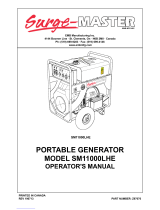 Surge master SM12000LHAE User manual
Surge master SM12000LHAE User manual
-
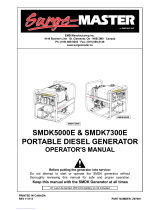 Surge master SMDK5000E User manual
Surge master SMDK5000E User manual
-
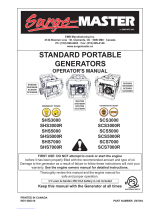 Surge master SCS5000 User manual
Surge master SCS5000 User manual
-
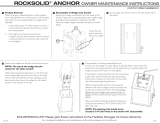 S.R.Smith RockSolid Single or Dual Post Anchor Operating instructions
S.R.Smith RockSolid Single or Dual Post Anchor Operating instructions
-
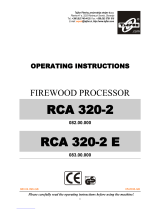 Tajfun Planina RCA 320-2 E Operating Instructions Manual
Tajfun Planina RCA 320-2 E Operating Instructions Manual
-
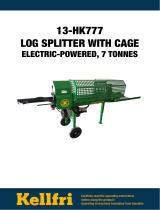 Kellfri 13-HK777 Owner's manual
Kellfri 13-HK777 Owner's manual
-
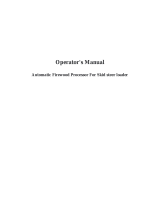 Toolots Automatic Firewood Processor Owner's manual
Toolots Automatic Firewood Processor Owner's manual
-
 S.R.Smith RockSolid Single or Dual Post Anchor Maintenance Manual
S.R.Smith RockSolid Single or Dual Post Anchor Maintenance Manual
-
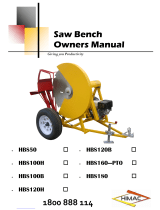 HIMAC HBS100H Operating Instructions Manual
HIMAC HBS100H Operating Instructions Manual























































